What Are the Best Project Management Methodologies?
Project management methodologies or PMMs have come a long way from the approach used in the traditional product development and manufacturing industry. In software, it has evolved to a very high degree, with several different types of project management methodologies for modern development companies to consider, some of which are:
- Agile project management,
- Waterfall project management,
- Scrum project management,
- Lean project management,
- Six Sigma project management,
- Kanban project management, and many others.
Some of them are actual frameworks while others are simply guides for better project management. All of them are equally effective, but each of them is suited to unique types of projects that bring out their true value.
Here are some of the best project management tools available for you to consider, as well as a robust design and prototyping tool that is the core ingredient in any software development project. Before we dive into the actual methodologies themselves, let's understand what a project methodology is and what it involves.
- Part 1: What are Project Methodologies
- Part 2: Top 5 Project Management Methodologies
- Part 3: The Best Design and Prototyping Tool
What is a Project Management Methodology?
Although the name itself is self-explanatory, it's useful to know exactly what we mean when we say project management methodology, primarily because it refers to a specific set of principles, processes, and actions that lead to the desired result. Moreover, understanding the purpose of a particular approach or methodology helps you identify the right kind of project where it will be the most effective and where those results will speak for themselves. Not every methodology is right for every project, which means your choice of PMM will depend on factors like your team size, their skillsets, the type of project, and its scope. This is a critical element because the methodology that you finally select for your project will define how the team works. With that understanding, let's look at some of the best project management methodologies that dominate the current software development landscape.
Top 5 Project Management Methodologies (PMMs) in Use Today
Waterfall Project Management Methodology
This is the traditional method of software development. It is a linear and fairly inflexible process but it works for projects where the requirements are pretty much set in stone. It doesn't allow for much deviation or creativity, but it helps when the client knows exactly what they want. Propounded in 1970 by Dr. Winston Royce, Waterfall segregates the project into distinct components, as shown in this image below:
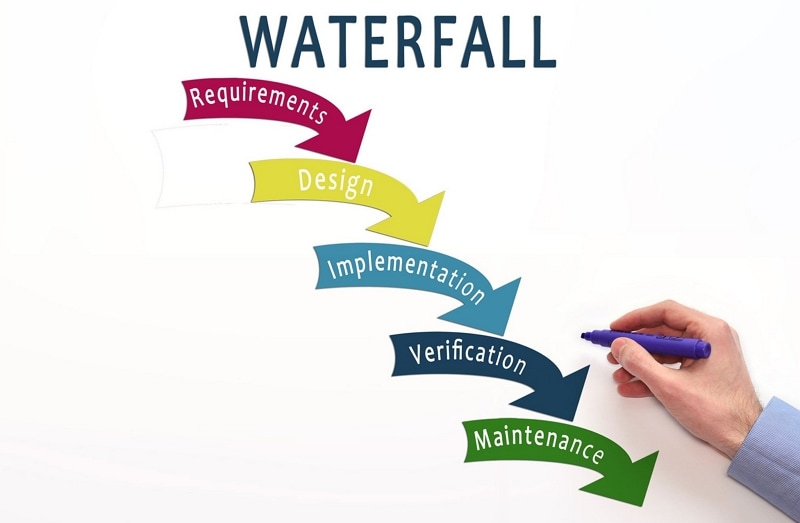
The waterfall method has several advantages as well as disadvantages. The advantages are that it is easy to implement, it is highly structured and less confusing to team members, and that it allows new members to get up to speed because of the extensive documentation that is prepared beforehand. The disadvantages are the inflexibility when it comes to making changes, the front-heavy nature that doesn't allow for mistakes in the early stages, and the overall rigidity of the model. Nevertheless, it is ideal for simple projects that have clear requirements from the very beginning.
Agile Project Management Methodology
Agile is a more recent methodology based on the original Agile Manifesto released in 2001. The ideas for this methodology had been around for a while the values and principles were formalized in the manifesto, which has been the guiding beacon for this methodology for the past two decades. Agile takes an iterative approach to software development and focuses on functional products rather than extensive documentation. It is a highly collaborative process that involves ongoing delivery through the life cycle of development. It is also responsive to changes, which makes it very different from the Waterfall approach.
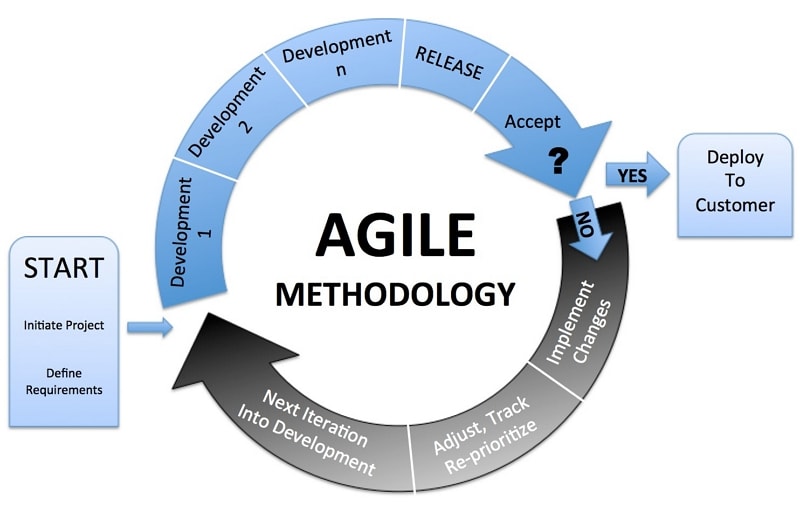
The Agile method of project management is ideal for larger projects that have a greater level of uncertainty regarding what the final product should look like and how it should function. That's why prototypes are an integral part of this methodology because they allow for close collaboration across team members and other stakeholders for each feature or aspect of the software. Scrum and Kanban are actually a part of the Agile process, but their unique characteristics and the ability to execute whole projects using these approaches arguably entitle them to the status of a PMM.
Scrum Project Management Methodology
The Scrum method, as mentioned, is part of the Agile methodology but is often used on its own. It, too, focuses on the iterative development of a product but is bound by time boxes called Sprints. These Sprints are of a consistent duration and never longer than a month each, and they comprise the planning stage at the start of each Sprint, the Daily Scrum, the Sprint Review, and the Sprint Retrospective. Each of these serves specific purposes that collectively keep the project moving and on track.
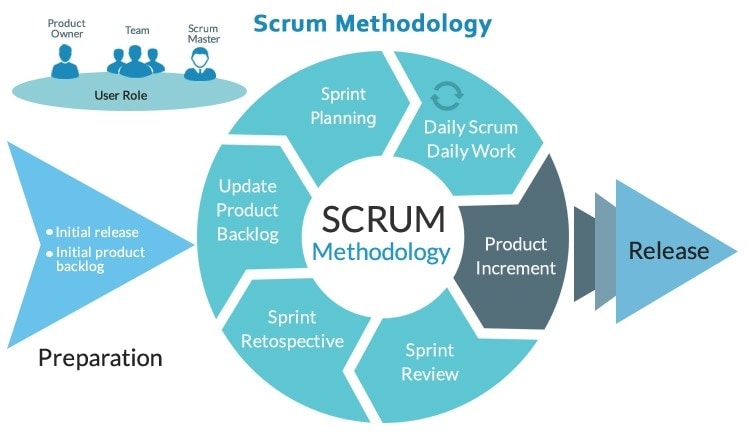
Scrum is ideal for projects with smaller teams of usually no more than seven members each that require a great deal of cross-functionality and flexibility. Although it's great for large and complex projects, it is imperative that team members be experienced, disciplined, and highly motivated to get the job done. They should also be able to self-manage priorities and have a clear understanding of the requirements.
Lean Project Management Methodology
The Lean project management methodology is all about minimizing waste while maximizing customer value. It outlines three different types of waste: muda, mura, and muri. These 3 Ms represent excessiveness, unwanted processes, imbalances, and anything else that takes away from the smooth flow of a process.
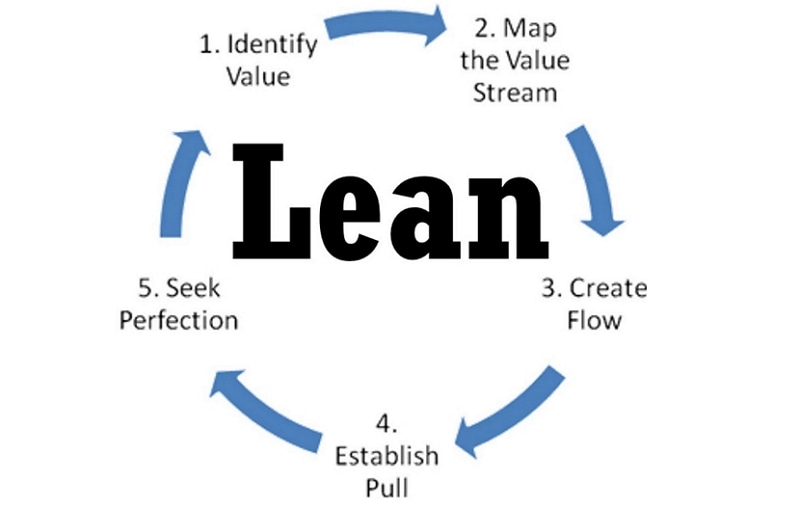
The Lean process has a rich history of other methodologies from which it is derived, the primary of these being TPS or the Toyota Production System, also known as The Toyota Way. Although initially addressing the manufacturing segment, it is more of a philosophy that outlines seven guiding principles:
- Eliminate waste
- Built quality in
- Create knowledge
- Defer commitment
- Deliver fast
- Respect people
- Optimize the whole
These principles have since been interpreted or represented in different ways but are generally implemented through standardized best practices such as pair-programming, test-driven development, automation, code reviews, building Wiki knowledge bases, etc.
Kanban Project Management Methodology
Yet another framework that is used in the Agile methodology but stands on its own merit is Kanban. Also used as part of The Toyota Way, Kanban focuses on delivering quickly in rapid succession through self-managing teams. Visualization of the workflow is a critical aspect and the starting point for the Kanban methodology; indeed, the process itself relies on visual cues such as a Kanban board, cards, and swimlanes to clarify the various stages of development, the status of each, and individuals responsible for them.
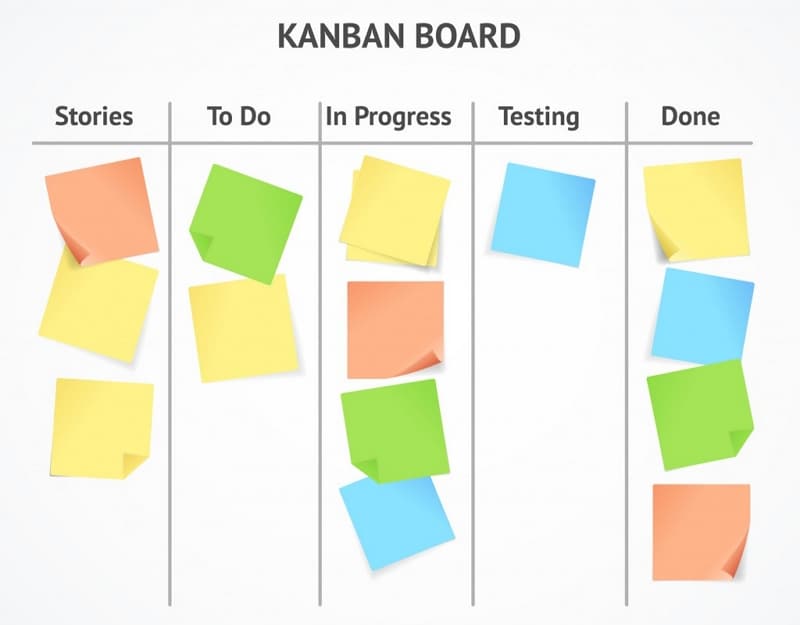
Kanban is one of the most universally applicable process improvement systems and is used typically for smaller teams that need a high degree of flexibility. That also means team members must be experienced, motivated, and able to self-manage to a great extent.
The Best Design and Prototyping Tool: Wondershare Mockitt
Of course, any project management methodology must be followed up with the right design and development tools, and one such versatile product we're showcasing today is Wondershare Mockitt. It is a cloud-based design and prototyping platform that is built around the concept of deep and wide collaboration, which is why it supports multiple project management methodologies. Users can create stunning designs and vector drawings using Boolean and Bezier operations, and rapidly prototype them in a responsive and highly collaborative environment. This makes it the perfect tool to implement projects that follow any of the PMMs discussed here.

- Co-editing with other team members in the Team Workspace
- Real-time preview and commenting for tight feedback loops
- Easy and secure sharing with attribute-controllable links and QR codes
- Wide range of component libraries, UI kits, design systems, and ready templates
- Flowcharting tool to create user flows for better UX design
- A new design tool to create your own components
- Drag-and-drop linking to prototype designs
- Smoother developer handoffs
Conclusion
The key to choosing the right PMM is the project itself. The scope of the project, the complexity, the number of team members available, their skillsets and experience, their level of maturity, etc. all go into the decision process when choosing a project management methodology. Each PMM is suited to a specific set of project types, but the important thing is to have the right tools to execute the project, especially the crucial design and prototyping phase where most of the key decisions are made.
No matter what project management methodologies you use, Mockitt has your back. As a responsive tool that is built for collaboration, it lends itself to thousands of use cases where speed, agility, and collaboration are paramount. Moreover, despite being a full-featured design and prototyping tool, it won't dent your budget whether you're using it individually or for a large team (robust team management tools included.) Best of all, it's hosted on the cloud, which makes it accessible from anywhere using secure login credentials.

